er-zico
Dear Readers,Welcome to my personal blog. I'm Sabyasachi Naik (Zico,24).An Agnostic,deeply NON religious(atheist), and Secular Progressive Civil Engineer . I'm brown and proud to be an Indian tribe. “I want to say a word to the Brahmins: In the name of God, religion, sastras you have duped us. We were the ruling people. Stop this life of cheating us from this year. Give room for rationalism and humanism.” ― Periyar E.V. Ramasamy
198 posts
Latest Posts by er-zico
Empathy comes from the Greek empatheia—em(into) and pathos (feeling)—a penetration, a kind of travel. It suggests you enter another person’s pain as you’d enter another country, through immigration and customs, border crossing by way of query.
Leslie Jamison, The Empathy Exams: Essays (via fyp-philosophy)



Americans are continuing to read books at high levels: 73% of adults say they have read a book in the past year.
And when people reach for a book, it is much more likely to be a traditional print book than a digital product. Fully 65% of Americans have read a print book in the last year, more than double the share that has read an e-book (28%) and more than four times the share that has consumed book content via audio books (14%).
Book Reading 2016
Constellations and the Calendar
Did you recently hear that NASA changed the zodiac signs? Nope, we definitely didn’t…
…Here at NASA, we study astronomy, not astrology. We didn’t change any zodiac signs, we just did the math. Here are the details:
First Things First: Astrology is NOT Astronomy…
Astronomy is the scientific study of everything in outer space. Astronomers and other scientists know that stars many light years away have no effect on the ordinary activities of humans on Earth.
Astrology is something else. It’s not science. No one has shown that astrology can be used to predict the future or describe what people are like based on their birth dates.

Some curious symbols ring the outside of the Star Finder. These symbols stand for some of the constellations in the zodiac. What is the zodiac and what is special about these constellations?

Imagine a straight line drawn from Earth though the sun and out into space way beyond our solar system where the stars are. Then, picture Earth following its orbit around the sun. This imaginary line would rotate, pointing to different stars throughout one complete trip around the sun – or, one year. All the stars that lie close to the imaginary flat disk swept out by this imaginary line are said to be in the zodiac.

The constellations in the zodiac are simply the constellations that this imaginary straight line points to in its year-long journey.
What are Constellations?
A constellation is group of stars like a dot-to-dot puzzle. If you join the dots—stars, that is—and use lots of imagination, the picture would look like an object, animal, or person. For example, Orion is a group of stars that the Greeks thought looked like a giant hunter with a sword attached to his belt. Other than making a pattern in Earth’s sky, these stars may not be related at all.

Even the closest star is almost unimaginably far away. Because they are so far away, the shapes and positions of the constellations in Earth’s sky change very, very slowly. During one human lifetime, they change hardly at all.
A Long History of Looking to the Stars
The Babylonians lived over 3,000 years ago. They divided the zodiac into 12 equal parts – like cutting a pizza into 12 equal slices. They picked 12 constellations in the zodiac, one for each of the 12 “slices.” So, as Earth orbits the sun, the sun would appear to pass through each of the 12 parts of the zodiac. Since the Babylonians already had a 12-month calendar (based on the phases of the moon), each month got a slice of the zodiac all to itself.

But even according to the Babylonians’ own ancient stories, there were 13 constellations in the zodiac. So they picked one, Ophiuchus, to leave out. Even then, some of the chosen 12 didn’t fit neatly into their assigned slice of the pie and crossed over into the next one.

When the Babylonians first invented the 12 signs of zodiac, a birthday between about July 23 and August 22 meant being born under the constellation Leo. Now, 3,000 years later, the sky has shifted because Earth’s axis (North Pole) doesn’t point in quite the same direction.

The constellations are different sizes and shapes, so the sun spends different lengths of time lined up with each one. The line from Earth through the sun points to Virgo for 45 days, but it points to Scorpius for only 7 days. To make a tidy match with their 12-month calendar, the Babylonians ignored the fact that the sun actually moves through 13 constellations, not 12. Then they assigned each of those 12 constellations equal amounts of time.
So, we didn’t change any zodiac signs…we just did the math.
Make sure to follow us on Tumblr for your regular dose of space: http://nasa.tumblr.com
Solitude matters, and for some people, it’s the air they breathe
Susan Cain (via fyp-psychology)

The Easterbunny Comes to NGC 4725
At first called “Easterbunny” by its discovery team, officially named Makemake is the second brightest dwarf planet of the Kuiper belt. The icy world appears twice in this astronomical image, based on data taken on June 29 and 30 of the bright spiral galaxy NGC 4725. Makemake is marked by short red lines, its position shifting across a homemade telescope’s field-of-view over two nights along a distant orbit. On those dates nearly coincident with the line-of-sight to the spiral galaxy in the constellation Coma Berenices, Makemake was about 52.5 astronomical units or 7.3 light-hours away. NGC 4725 is over 100,000 light-years across and 41 million light-years distant. Makemake is now known to have at least one moon. NGC 4725 is a famous one-armed spiral galaxy.
Credit: Bob English
Defining "rape culture"
A rape culture is a complex of beliefs that encourages male sexual aggression and supports violence against women.
It is a society where violence is seen as sexy and sexuality as violent. In a rape culture, women perceive a continuum of threatened violence that ranges from sexual remarks to sexual touching to rape itself.
A rape culture condones physical and emotional terrorism against women as the norm.
~ Rape culture is encouraging male sexual aggression.
~ Rape culture is regarding violence as sexy and sexuality as violent.
~ Rape culture is treating rape as a compliment, as the unbridled passion stirred in a healthy man by a beautiful woman, making irresistible the urge to rip open her bodice or slam her against a wall, or a wrought-iron fence, or a car hood, or pull her by her hair, or shove her onto a bed, or any one of a million other images of fight-fucking in movies and television shows and on the covers of romance novels that convey violent urges are inextricably linked with (straight) sexuality.
~ Rape culture is encouraging men to use the language of rape to establish dominance over one another ("I'll make you my bitch").
~ Rape culture is making rape a ubiquitous part of male-exclusive bonding.
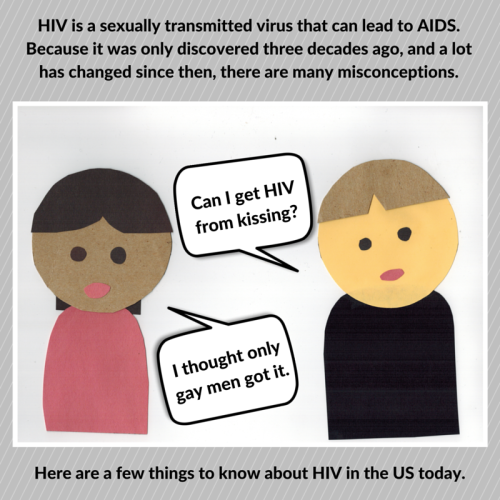
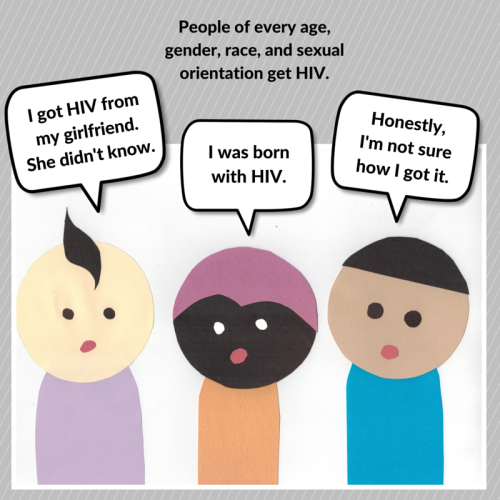
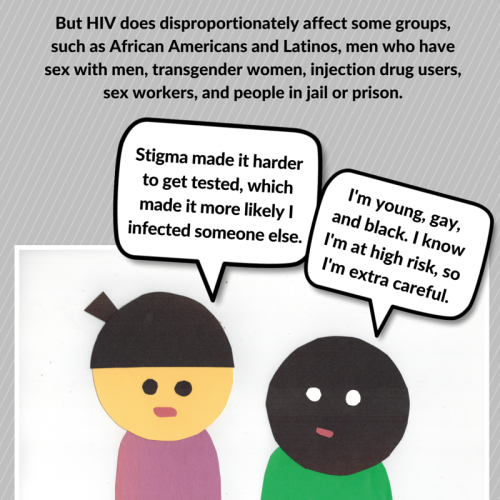
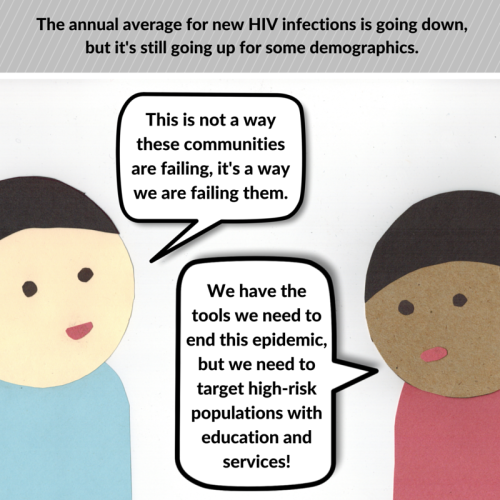


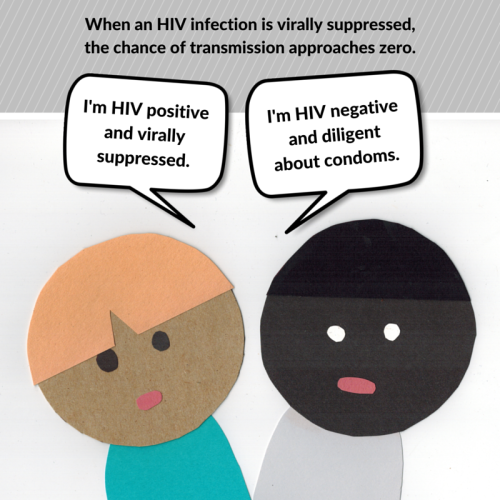
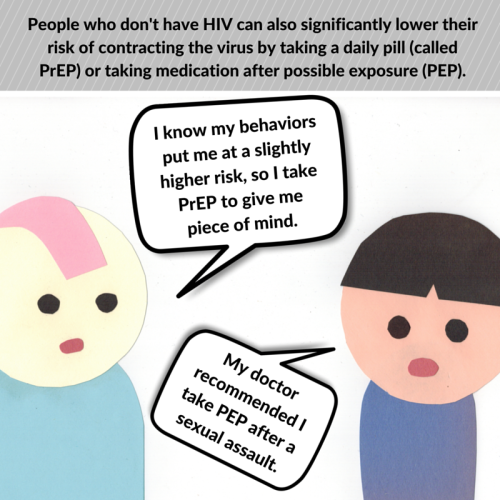
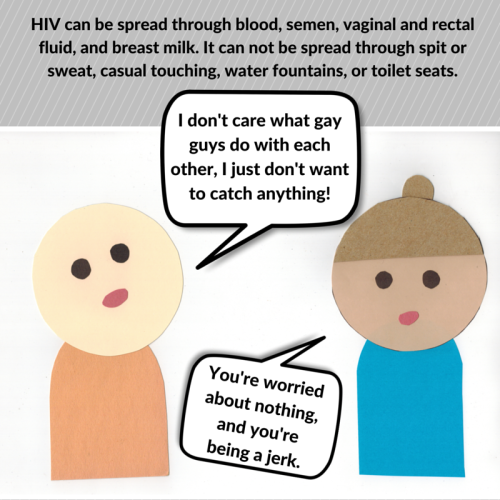
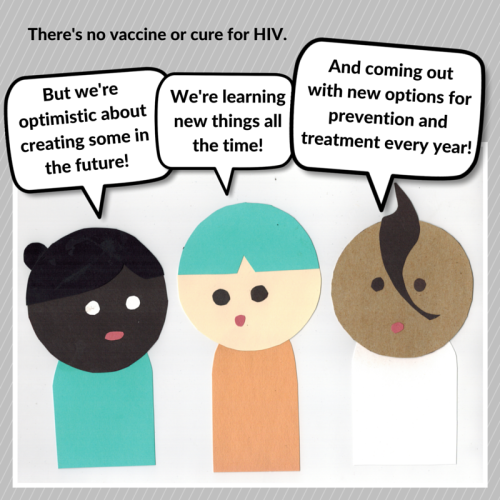
End the epidemic, end the stigma. Understand the actual risks. Donate to a local HIV organziation. Follow SexEdPlus for more stuff like this.






Sources:
Menstruation Facts
68 Random Facts about Menstruation
History of the Tampon
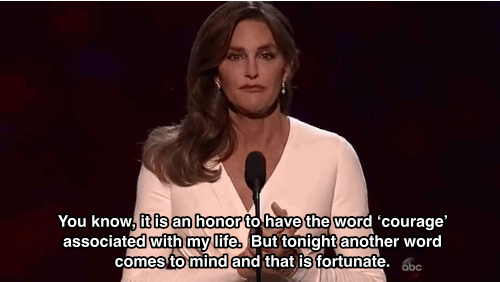








WATCH THE FULL SPEECH: Caitlyn Jenner Takes ESPYs By Storm: ‘Trans People Deserve Something Vital. They Deserve Your Respect’


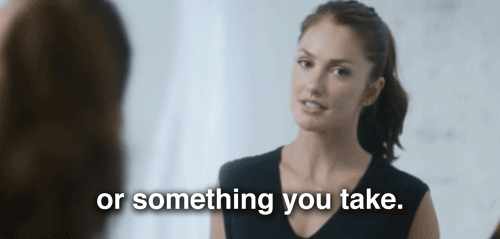
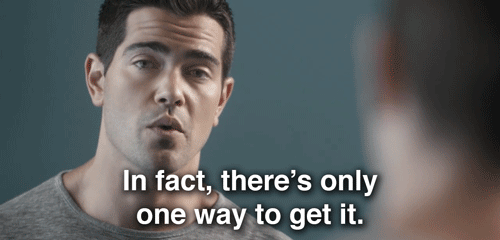
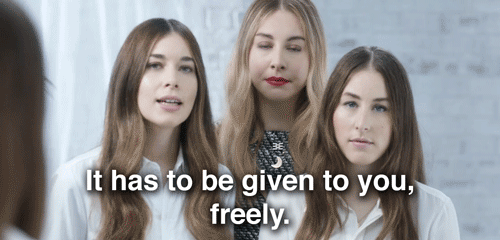
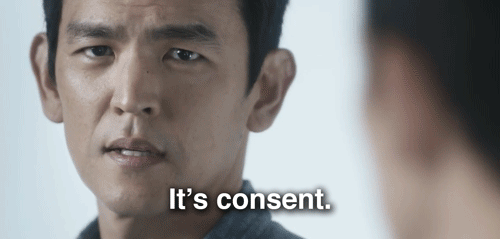

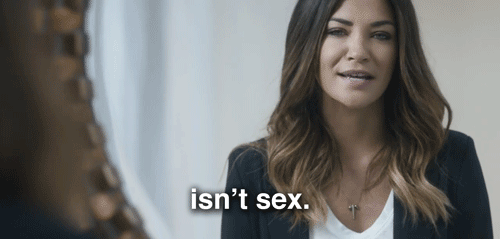
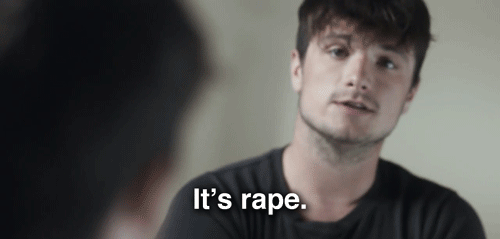
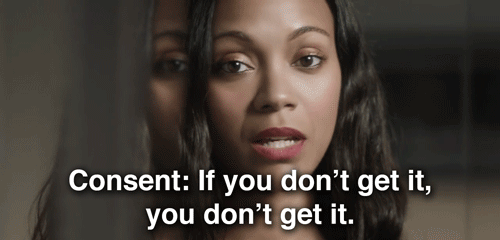
Consent: If you don’t get it, you don’t get it. Take the pledge to help stop sexual assault at ItsOnUs.org.










Space Station Science: Biological Research

Each month, we highlight a different research topic on the International Space Station. In August, our focus is biological research. Learning how spaceflight affects living organisms will help us understand potential health risks related to humans on long duration missions, including our journey to Mars.

Cells, microbes, animals and plants are affected by microgravity, and studying the processes involved in adaptation to spaceflight increases our fundamental understanding of biological processes on Earth. Results on Earth from biological research in space include the development of new medications, improved agriculture, advancements in tissue engineering and regeneration, and more.
Take a look at a few of the biological research experiments performed on space station:
Biomolecule Sequencer

Living organisms contain DNA, and sequencing DNA is a powerful way to understand how they respond to changing environments. The Biomolecule Sequencer experiment hopes to demonstrate (for the first time) that DNA sequencing is feasible in an orbiting spacecraft. Why? A space-based DNA sequencer could identify microbes, diagnose diseases and understand crew member health, and potentially help detect DNA- based life elsewhere in the solar system.
Ant-stronauts

Yes, ant-stronauts…as in ants in space. These types of studies provide insights into how ants answer collective search problems. Watching how the colony adapts as a unit in the quest for resources in extreme environments, like space, provides data that can be used to build algorithms with varied applications. Understanding how ants search in different conditions could have applications for robotics.
TAGES

The TAGES experiment (Transgenic Arabidopsis Gene Expression System) looks to see how microgravity impacts the growth of plant roots. Fluorescent markers placed on the plant’s genes allow scientists to study root development of Arabidopsis (a cress plant) grown on the space station. Evidence shows that directional light in microgravity skews root growth to the right, rather than straight down from the light source. Root growth patters on station mimic that of plants grown at at 45% degree angle on Earth. Space flight appears to slow the rate of the plant’s early growth as well.
Heart Cells

Spaceflight can cause a suite of negative health effects, which become more problematic as crew members stay in orbit for long periods of time. Effects of Microgravity on Stem Cell-Derived Cardiomycytes (Heart Cells) studies the human heart, specifically how heart muscle tissue contracts, grows and changes in microgravity. Understanding how heart muscle cells change in space improves efforts for studying disease, screening drugs and conducting cell replacement therapy for future space missions.
Medaka Fish

Chew on these results…Jaw bones of Japanese Medaka fish in microgravity show decreased mineral density and increased volume of osteoclasts, cells that break down bone tissue. Results from this study improve our understanding of the mechanisms behind bone density and organ tissue changes in space.
These experiments, and many others, emphasize the importance of biological research on the space station. Understanding the potential health effects for crew members in microgravity will help us develop preventatives and countermeasures.
Make sure to follow us on Tumblr for your regular dose of space: http://nasa.tumblr.com










Nearly half a century after Roe, it’s time the media stops treating abortion like something taboo and start treating it like what it is – an important and normal part of life for a huge portion of Americans.
I’m 16 and I’m pregnant. My mother doesn’t believe in abortion. What do I do?

Someone asked us:
I’m 16 and pregnant. I hate to say it but I wasn’t smart when it came to protection. The problem is, my mom doesn’t believe in abortion. What are my options. I’m so scared that I’m going to be forced to have a baby I’m not ready for. I’m 16. I don’t even have a drivers license yet. How am I suppose to raise a baby. My mom is very unsupportive. How am I going to do this?! What are my options. If I do have to have this baby what can I do?? I’m so scared. I feel like my life is falling apart.
I know that’s hard to believe right now, but you’ll get through this. You’re in a tough situation — no doubt about it. But you’re already reaching out for help. That’s a great first step, and we’re here to help you.
When you’re in a situation that feels overwhelming it helps to take things one step at a time. It sounds like the first thing you need to do is talk with someone in person about your options. You seem pretty sure that your mother doesn’t believe in abortion and wouldn’t support you if you wanted to have one. I can’t tell from your message what exactly you want to do — if you want to keep the pregnancy and become a parent, have an abortion, or give the baby for adoption — but if talking with your mother won’t be helpful, talking with the staff at your nearest Planned Parenthood health center will be. First they can talk through your options with you, and then get you started on the right option for you depending on what you decide (prenatal care or abortion).
If you want to have an abortion, you may not need your mother’s permission. That depends somewhat on where you live. Some states don’t require permission from your parents at all. Other states do. But even most of those states have a way for you to have an abortion without a parent or guardian. That process is called judicial bypass: It’s when a judge says it’s okay for you to get an abortion without involving your parents in your decision.
It may sound scary, but the staff at your nearest Planned Parenthood health center can help with that process. So call them and make an appointment.
Once you’ve made your appointment, your second step is to find a way to get there. You said that you don’t have a driver’s license. For that and other practical reasons, you may need to let someone in your life that you trust know what’s going on, someone who can give you a ride. Otherwise, can you walk or take public transportation? Can you take a taxi? The health center staff you speak with on the phone may have some suggestions or directions for getting there.
The rest of the steps you need to take are going to depend on what you decide to do. But remember, the staff at your nearest Planned Parenthood health center will help you every step of the way.
Last piece of advice: don’t delay! If you’re pregnant, regardless of whether you’re going to have an abortion or stay pregnant, it’s important to get started on that path ASAP, to make sure you stay healthy. You can do this!
-Emily at Planned Parenthood




Empathy for others’ pain rooted in cognition rather than sensation
The ability to understand and empathize with others’ pain is grounded in cognitive neural processes rather than sensory ones, according to the results of a new study led by University of Colorado Boulder researchers.
The findings show that the act of perceiving others’ pain (i.e., empathy for others’ pain) does not appear to involve the same neural circuitry as experiencing pain in one’s own body, suggesting that they are different interactions within the brain.
“The research suggests that empathy is a deliberative process that requires taking another person’s perspective rather than being an instinctive, automatic process,” said Tor Wager, the senior author of the study, director of the Cognitive and Affective Neuroscience Laboratory and Professor of Psychology and Neuroscience at CU-Boulder.
A study detailing the results was published online today in the journal eLife.
Empathy is a key cornerstone of human social behavior, but the complex neural interactions underlying this behavior are not yet fully understood. Previous hypotheses have suggested that the same brain regions that allow humans to feel pain in their own bodies might activate when perceiving the pain of others.
To test this idea, the researchers compared patterns of brain activity in human volunteers as they experienced moderate pain directly (via heat, shock, or pressure) in one experimental session, and watched images of others’ hands or feet being injured in another experimental session. When volunteers watched images, they were asked to try to imagine that the injuries were happening to their own bodies.
The researchers found that the brain patterns when the volunteers observed pain did not overlap with the brain patterns when the volunteers experienced pain themselves. Instead, while observing pain, the volunteers showed brain patterns consistent with mentalizing, which involves imagining another person’s thoughts and intentions.
The results suggest that within the brain, the experience of observing someone else in pain is neurologically distinct from that of experiencing physical pain oneself.
“Most previous studies focused only on the points of similarity between these two distinct experiences in a few isolated brain regions while ignoring dissimilarities. Our new study used a more granular analysis method,” said Anjali Krishnan, the lead author of the study and a post-doctoral research associate in the Institute of Cognitive Science at CU-Boulder while the research was conducted. She is currently an assistant professor at Brooklyn College of the City University of New York.
This new analysis method identified an empathy-predictive brain pattern that can be applied to new individuals to obtain a brain-related ‘vicarious pain score,’ opening new possibilities for measuring the strength of activity in brain systems that contribute to empathy.
The results may open new avenues of inquiry into how the brain regions involved in empathy help humans to relate to others when they experience different types of pain. Future studies may also explore the factors that influence one’s ability to adopt another’s perspective and whether it might be possible to improve this ability.

Dull and dirty: Your workplace could affect brain function
A new study by a Florida State University researcher shows that both a lack of stimulation in the workplace and a dirty working environment can have a long-term cognitive effect on employees.
“Psychologists say that the brain is a muscle, while industrial hygienists point to chemicals in the work environment that may cause decline,” said Joseph Grzywacz, the Norejane Hendrickson Professor of Family and Child Sciences and lead researcher on the study. “There are real things in the workplace that can shape cognitive function: some that you can see or touch, and others you can’t. We showed that both matter to cognitive health in adulthood.”
In the past, researchers had been divided on whether it was working in an unclean workplace — facing exposure to agents such as mold, lead or loud noises — or working in an unstimulating environment that took the biggest toll on brain health as people aged.
This new study is significant because it showed both can play an important role in long-term cognitive well-being.
Grzywacz’s findings are published in the June issue of the Journal of Occupational and Environmental Medicine.
Grzywacz and his team obtained cognitive function data from working adults participating in the Midlife in the United States study. Their results had two major takeaways: One was that greater occupational complexity — that is the learning of new skills and taking on new challenges — resulted in stronger cognitive performance particularly for women as they aged.
The second result was that men and women who had jobs that exposed them to a dirty working environment saw a cognitive decline.
“Both of these issues are important when we think about the long-term health of men and women,” said Grzywacz, who also serves as the chair of the Department of Family and Child Sciences.
Grzywacz and colleagues analyzed the data to examine individuals’ workplaces and their ability to maintain and later use information they learned. They also looked at their executive functioning skills such as their ability to complete tasks, manage time and pay attention. Additionally, the data included responses from participants asking them about any memory issues they were experiencing.
“The practical issue here is cognitive decline associated with aging and the thought of, ‘if you don’t use it, you lose it,’” Grzywacz said. “Designing jobs to ensure that all workers have some decision making ability may protect cognitive function later in life, but it’s also about cleaning up the workplace.”
The data included 4,963 adults ages 32 to 84 from the 48 contiguous states. The sample was 47 percent male and 53 percent female.
Creativity and Mental Illness

At one point or another, most of us have heard the stereotype of the mad genius or the creative genius who suffers from mental illness(es). Think about of historically famous or influential painters and writers who had unstable lives–some went as far as committing suicide.
The problem? This is only anecdotal evidence. It doesn’t really give us data that is reliable and objective. But what do the studies say?
Contrary to what this image claims, the link between creativity and mental disorders like anxiety, depression, and bipolar disorder is not as clear cut. The primarily reason is because not many studies have looked at mental illness and creativity. Furthermore, ‘mental illness’ is an umbrella term that covers many different illnesses or disorders. So naturally there are even less studies looking at particular mental disorders and creativity.
Creativity and Depression
Silvia and Kimbrel (2010) summarize the small research that has looked for a potential depression-creativity link. They note that while some studies have found moderate positive correlations between depression and creativity, others have found negative correlations. They conclude that “the evidence for a depression-creativity link is clearly inconsistent.”
Creativity and Anxiety
They further point out that even less studies have been done to evaluate an anxiety-creativity link. One study looked at anxiety, depression, and personality disorders as a whole without distinguishing the individual disorder-creativity links. Two other studies they summarize looked at shyness, an aspect of social anxiety spectrum; one study found that shy preschoolers were rated less creative by teachers, while the other found that shy female college students were less creative in a poem-writing task.
“Taken together,” write Silvia and Kimbrel, “these studies suggest that shyness (and by extension social anxiety) may be associated with less creativity” [emphasis of “may” on my part]. However, if this link does exist, it doesn’t necessarily mean that anxiety in general is negatively correlated with creativity, or vise versa–more research is needed to establish if a link exists at all..
Creativity and Bipolar Disorder
What about a bipolar disorder-creativity link? A book chapter by Lloyd-Evans, Batey, and Furnham (2006) reviewed biographical and psychiatric research studies to examine if a relationship exists.
Biographical studies work by collecting biographical data of historical individuals considered highly creative–say, Edgar Allan Poe–and searching for explicitly documented mental illnesses or clues that imply the existence of a disorder to developing a retrospective diagnosis. Evans and co-writers note that while biographical studies seem to suggest a positive correlation between bipolar disorder and creativity, they have serious limitations and can’t establish a definitive link. For example, they point out that Vincent van Gogh has been retrospectively diagnosed with different mental illnesses by different clinicians. Furthermore, they note that “it is always possible to find biographical material that appears to support a specific hypothesis and the same information might well be used to link alcoholism and creativity” (120).
Psychiatric research studies look at persons who have been diagnosed with certain mental disorders, in this case bipolar disorder, and give them different creativity measurements to see how they differ from “normal” participants. These studies, too, point to a potential positive bipolar disorder-creativity link but were not without limitations. Some of these studies had potentially biased samples and/or no control groups. And another study didn’t show a significant correlation.
Conclusion
Clearly, things are not as simple as the images implies. A definitive link between these mental disorders and creativity has not been established yet primarily because the research is lacking, and the few available studies have methodological limitations. Here is a quick summary:
The limited literature on depression-creativity is inconsistent. Some studies show a positive correlation, others show a negative correlation.
Studies haven’t really studied anxiety-creativity. The available literature looks at shyness–which lies in the social anxiety spectrum–and has provided some evidence that there is a negative relationship between shyness, or social anxiety, and creativity.
Slightly more research has examined bipolar disorder and creativity. These studies fall into two categories: biographical and psychiatric studies. Both of these methods show a tentative link (positive) between bipolar disorder and creativity, but because of certain limitations, more research is warranted to definitively establish the correlation.
To make things more complicated, we have to consider how creativity is defined and measured, and the severity of the particular mental disorder. Lastly, if we can’t be 100% sure there exists a correlation between these mental disorders and creativity, how can we possibly say that one causes the other like the image suggests? We simply can’t.
Reference:
Lloyd-Evans, R., Batey, M., & Furnham, A. (2006). Bipolar disorder and creativity: Investigating a possible link. In A. Columbus (Ed.), Advances in Psychology Research, Volume 40. (pp. 111-142). NY: Nova Science Publishers.
Silvia, P. J. & Kimbrel, N. A. (2010). A dimensional analysis of creativity and mental illness: Do anxiety and depression symptoms predict creative cognition, creative accomplishments, and creative self-concepts? Psychology of Aesthetics, Creativity, and the Arts, 4, 2-10.
10 Ways to Look After Your Mental Wellbeing (with added kitties)
1. Talk about your feelings
Talking about your feelings can help you stay in good mental health and deal with times when you feel troubled.

2. Keep active
Regular exercise can boost your self-esteem and can help you concentrate, sleep, and look and feel better. Exercise keeps the brain and your other vital organs healthy, and is also a significant benefit towards improving your mental health.
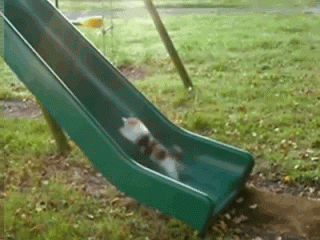
3. Eat well
Your brain needs a mix of nutrients in order to stay healthy and function well, just like the other organs in your body. A diet that’s good for your physical health is also good for your mental health.
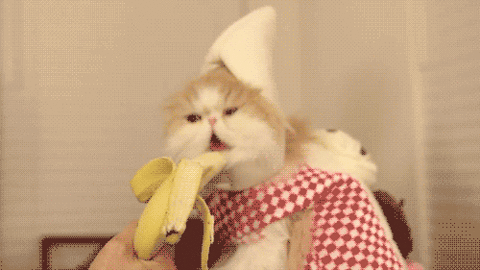
4. Drink sensibly
We often drink alcohol to change our mood. Some people drink to deal with fear or loneliness, but the effect is only temporary.
When the drink wears off, you feel worse because of the way the alcohol has affected your brain and the rest of your body. Drinking is not a good way to manage difficult feelings.
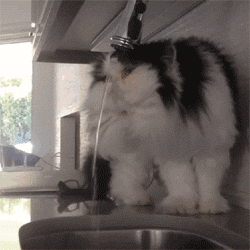
5. Keep in touch
There’s nothing better than catching up with someone face to face, but that’s not always possible. You can also give them a call, drop them a note, or chat to them online instead. Keep the lines of communication open: it’s good for you!
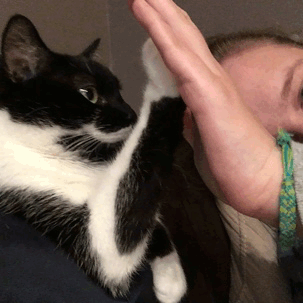
6. Ask for help
None of us are superhuman. We all sometimes get tired or overwhelmed by how we feel or when things don’t go to plan.
If things are getting too much for you and you feel you can’t cope, ask for help. Your family or friends may be able to offer practical help or a listening ear.
Local services are there to help you.
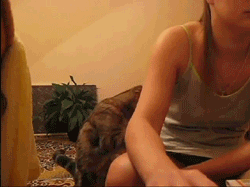
7. Take a break
A change of scene or a change of pace is good for your mental health.
It could be a five-minute pause from cleaning your kitchen, a half-hour lunch break at work, or a weekend exploring somewhere new. A few minutes can be enough to de-stress you. Give yourself some ‘me time’.

8. Do something you’re good at
What do you love doing? What activities can you lose yourself in? What did you love doing in the past?
Enjoying yourself can help beat stress. Doing an activity you enjoy probably means you’re good at it, and achieving something boosts your self-esteem.

9. Accept who you are
We’re all different. It’s much healthier to accept that you’re unique than to wish you were more like someone else. Feeling good about yourself boosts your confidence to learn new skills, visit new places and make new friends. Good self-esteem helps you cope when life takes a difficult turn.

10. Care for others
‘Friends are really important… We help each other whenever we can, so it’s a two-way street, and supporting them uplifts me.’
Caring for others is often an important part of keeping up relationships with people close to you. It can even bring you closer together.
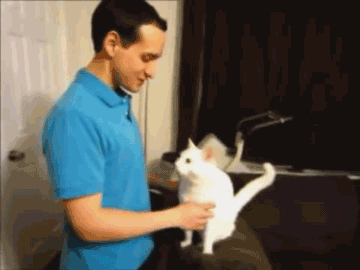
(Source: mentalhealth.org.uk)
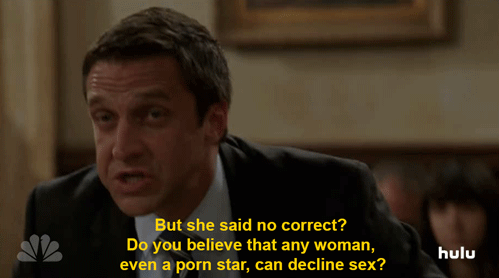
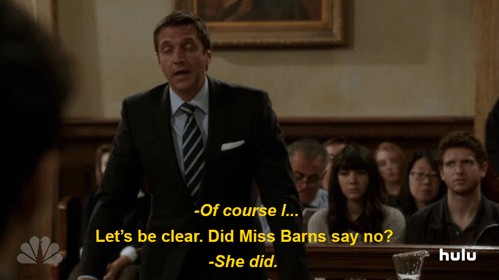
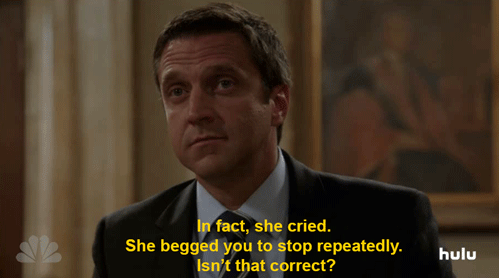
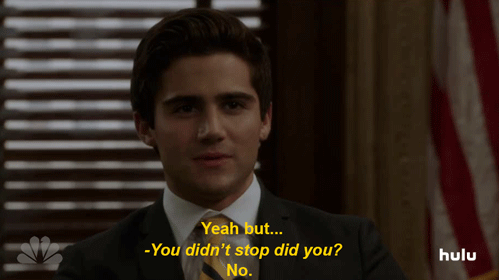
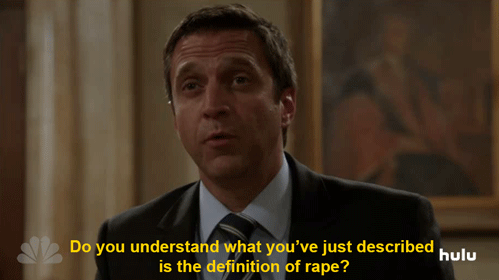
This is how all rape trials should go. Especially those of people who work in the sex industry because, unfortunately, some people take their profession as consent.
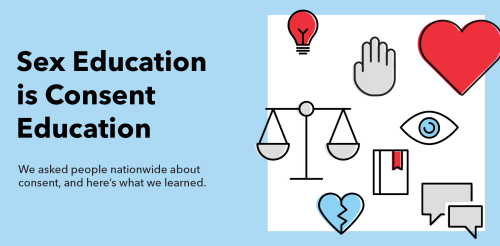

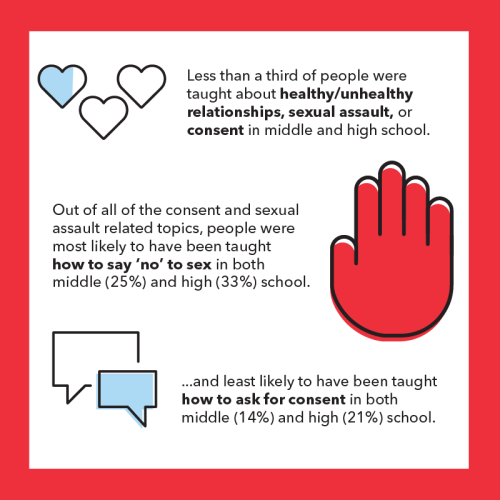
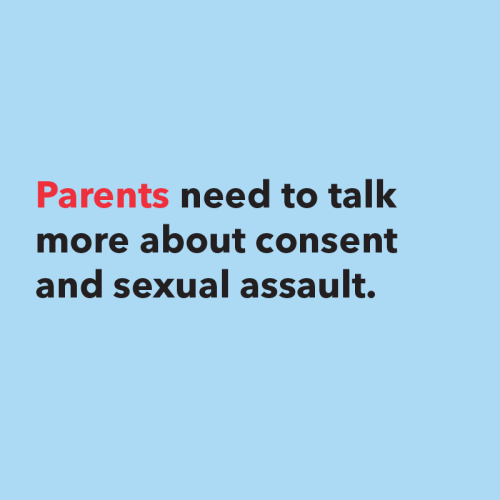
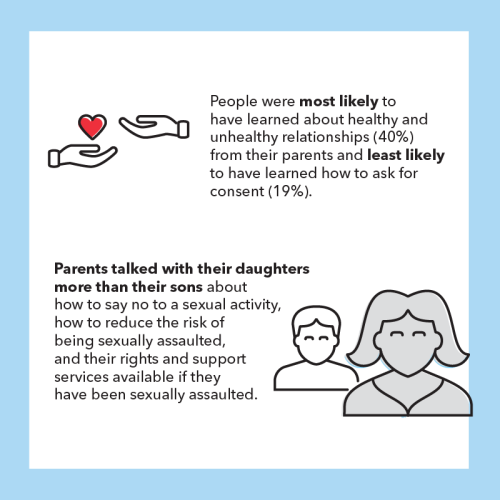
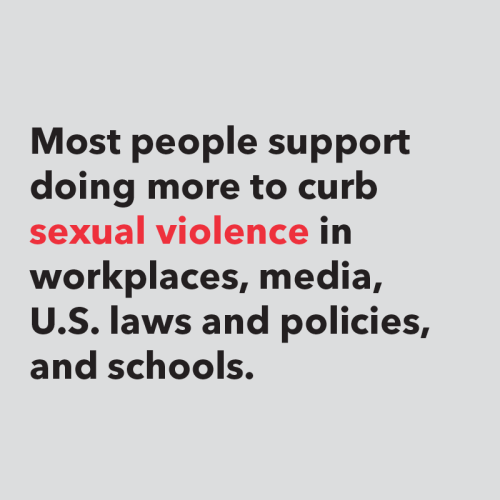
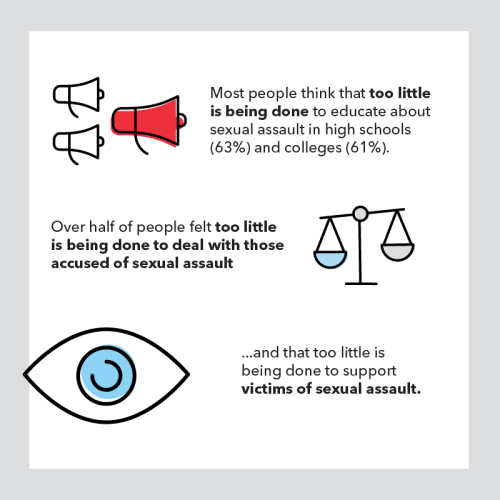
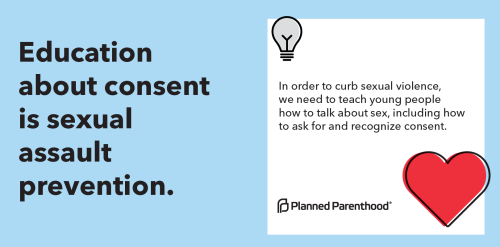
Our new survey data is clear:
Most people have not received any education about what consent is, what it looks like, or how to do it. This needs to change.
Education about consent is sexual assault prevention.
it is very very important for boys to know that:
you’re allowed to express your discomfort and hurt
you’re allowed to speak up and defend yourself
your emotions are valid
you’re not a bad person
you’re not ugly
you don’t have to laugh at sexist jokes just because everyone is laughing
you’re not inferior to girls
you are loved
the stereotypes that mainstream media portray you as are untrue
only you know what it’s like to be you, everyone else is just looking in from the outside
you’re not a bad person, and people are going to try and make you feel like you are, but you’re not
Self Care: Sleep
How To Cope with Nightmares
How to Keep a Dream Journal
Making a Dream Journal
Sleep Meditation Music
Teas for Insomnia
Natural Sleep Remedies
Medication Interactions Checker (Make sure you’re okay to take sleep aids before doing so!)
DIY Bubblebath
Foods that can help/harm sleep
Cheap Pillows
Aromatherapy
Guided Meditation
Maria Fabrizio On Being Subtle

(Illustration for “How A Woman’s Plan To Kill Herself Helped Her Family Grieve”)
Maria Fabrizio is an artist working out of Columbia, South Carolina. During the week she illustrates news headlines for her blog, Wordless News.
From mental health issues to how listening to music can speed up healing, Maria has transformed difficult-to-visualize health issues into provocative illustrations that balance sensitivity. As a visual producer for Shots, I often call Maria when we have a tough story that could benefit from a smart and emotional concept.
So I called her up to chat about it. Our discussion has been edited for clarity and length.
Health issues can be particularly difficult to illustrate. How do you tease out ideas from challenging topics like mental health, aging, fertility—many of which are more internal?
A lot of times like that you can’t use photography because you don’t want to show an actual person. You want to make the concept broad enough so that people can reflect on it or put themselves in that position.
I like to start off with a metaphor. There was a piece earlier in the year on suicide and dementia, and deciding when the right time to go was. I thought of winter. And the feeling that winter is a time when things are dying. There’s also this bird flying away and this woman is letting it go. She’s making that decision. The timing was right. It’s hard to find the right level of sensitivity and abstractness so people can project onto topics that are difficult.


(Top: Illustration for “If You Have Dementia, Can Hasten Death As You Wish?” Bottom: Illustration for “Women Want To Stay In The Game, But Life Intervenes”)
One of our favorite illustrations is the fireflies… what was the story behind that?
It was in the summer. I remember feeling like, “I don’t know how I’m going to do this.” At the same time I got the assignment I had been reading this blog by Eric Meyer– he is a coder and internet guru. His daughter was dying of brain cancer. She was young, five years old, and I was reading this blog and reading the piece you sent and I was so depressed. I went out on my back porch. The fireflies were coming out super early. The piece you sent me was all about this woman being surrounded by her family before she decided to end her life.
That was the only sketch I sent for that one. And I just said, “I hope this works.”
You’ve talked before about the importance of subtlety. It made me think of this one you made for a story on drinking and where the line exists between having had just enough and too many. The woman’s body posture hints at what she’s thinking. I’m remembering that you reworked her posture to get it right.


Being subtle or being quiet, especially for something like decision-making, is crucial in getting that tension right. In this one, I drew her like 15 times. She’s looking down, her left foot is way off the glass but she also looks really relaxed. I wasn’t drinking when I made this, but I did try and get in the mindset—ok, what does it feel like when you’ve had a couple drinks and you’re relaxed and you’re like should I have another one? And I felt like the martini glass was the right level of fragile for the concept. It’s all very subtle.

Illustration for “Rethinking Alcohol: Can Heavy Drinkers Learn To Cut Back?”
All illustrations by Maria Fabrizio for NPR

This diagram shows our cosmic address at a glance. We see our planetary system around the Sun, our stellar neighborhood in our galaxy, our galaxy in the local group of galaxies, and our group in the entire universe.
Learn much more in the Cullman Hall of the Universe.






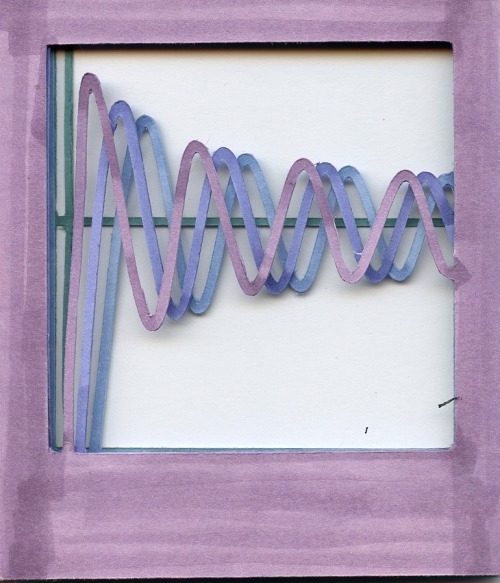

Gaussian distributions Maclaurin series of csc(x) Maclaurin series of csch(x) Bessel functions of the second kind Also I have an instagram now???? Add me! –> eigenstuff










Forest. Ocean. Repeat.
A small sampling of the stunning images by Liza Surova you will find on tumblr and Instagram.
Check out this tumblr!


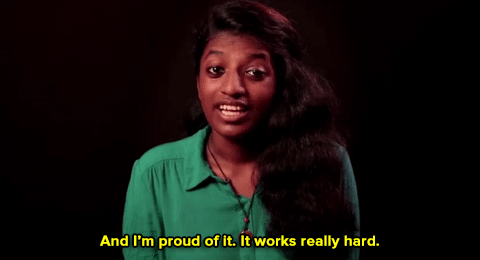






Watch: Indian teens explain why they love their skin — and send a crucial message to beauty companies
follow @the-movemnt








Watch: Bill Nye shuts down just about every global warming myth in one video
Follow @the-future-now





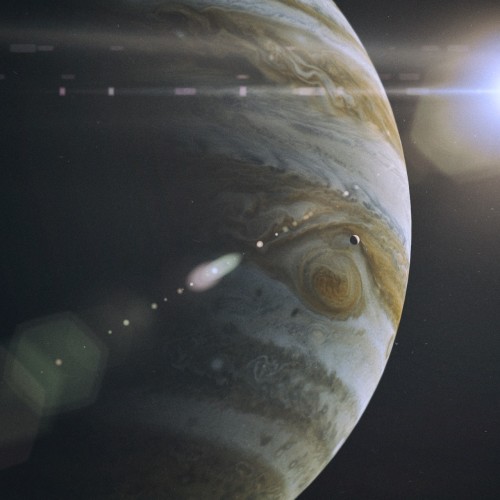



Planet Series - Beau Wright